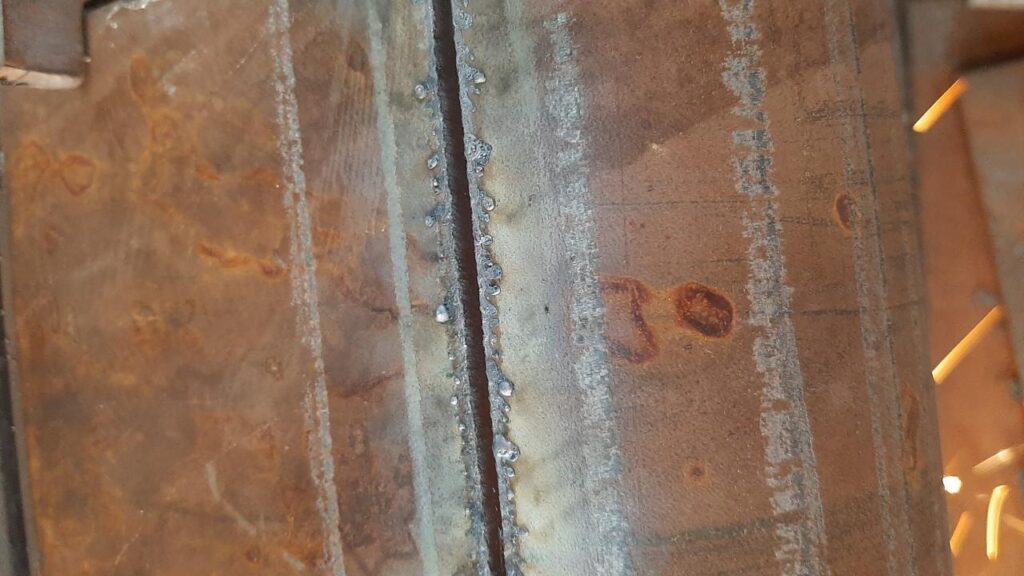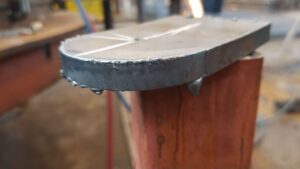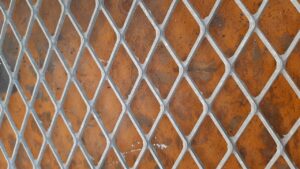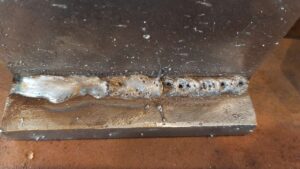There is always a danger when working with metal and each cutting method has some dangers associated with it. Just keep a clear mind and focus on what you are doing then you should be safe.
The different tools and machines used to cut metal
Angle grinder
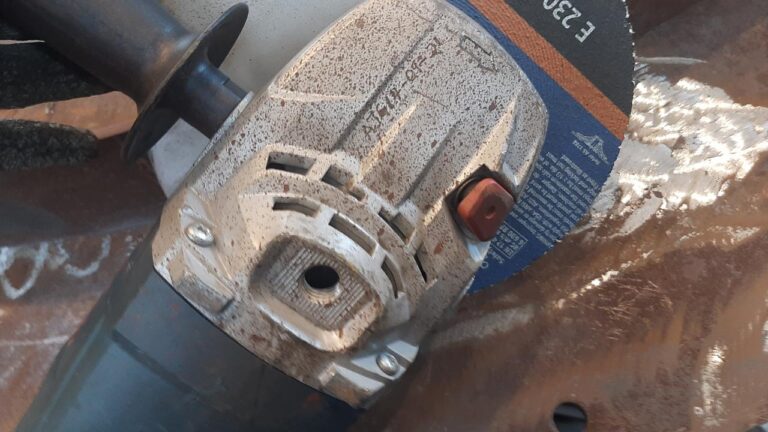
Cutting with an angle grinder is one of the most common if not the most common method used to cut most kinds of steel.
You can read up on what is an angle grinder used for or how to cut different profiles with an angle grinder. I cover all the different profiles that you will be able to cut with a grinder. This is knowledge everyone should have when working with a grinder to stay safe.
Oxy-fuel cutting
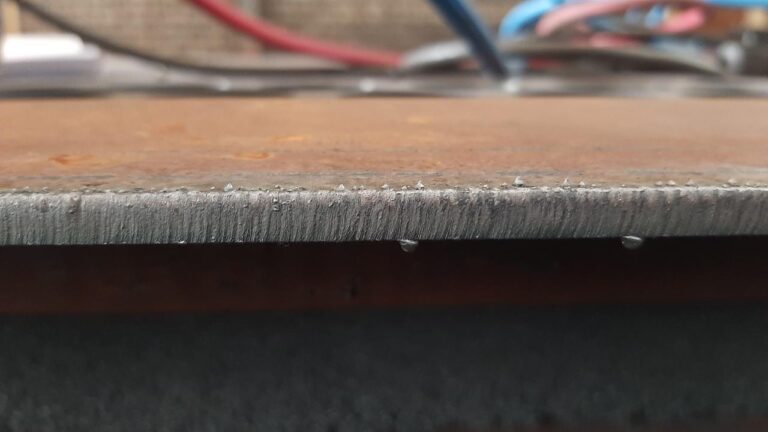
Oxy-fuel is one of my favorite ways of cutting metals, but it is limited to carbon steel and the cuts might not look as neat.
You can improve your cuts by using a cutting iron. This is usually just two round bars welded in a T shape. You can find out more about oxy-fuel cutting in my post on how to set up and use a cutting torch.
Plasma Cutting
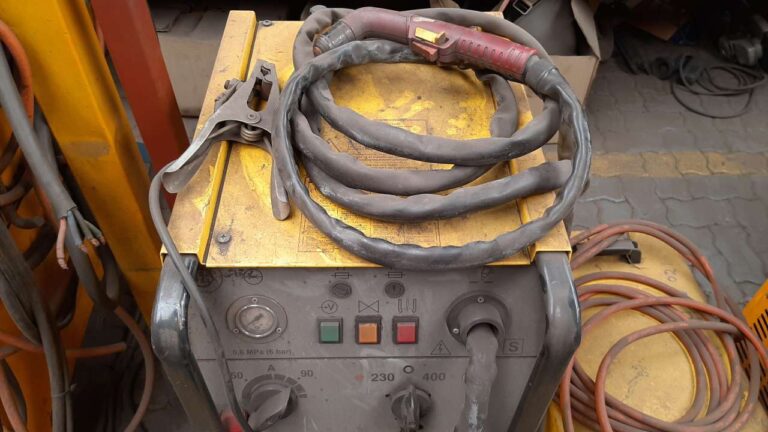
Plasma cutting is a lot like oxy-fuel cutting, but you can cut stainless steel. It works by creating an arc that heats the metal then a steady stream of compressed air is used to blow the heated metal away.
You should also wear the same PPE as when you are welding because it creates a similar arc to welding and can cause arc-eyes.
Check out my full post on PPE where I cover all the PPE you will need when working with metal and for welding in full detail.
Water jet cutting
Water jet cutting works by applying a massive amount of psi, up to 90,000psi. The water jet is pushed out of the nozzle forming a cut. It is also the most accurate form of cutting there is, within 0.025mm.
Water jet cutting is only used on CNC machines because it will be impossible and very dangerous to hold a machine that is capable of blowing out a thin stream of water at 90000psi in your hands.
Guillotine
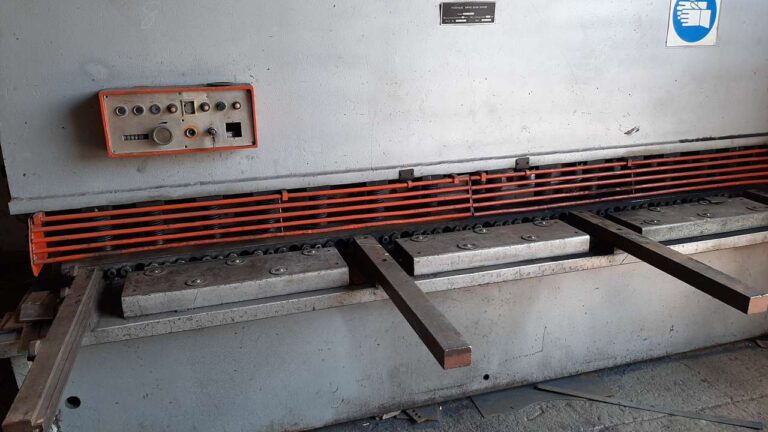
A guillotine works exactly like those the Frech used, just with a few modifications. It still has an angled blade but the blade is usually pressed down using hydraulics, not gravity.
The angled blade helps to focus the force being applied to a tiny spot at a time. This makes it a lot easier to cut. Most large guillotines you find can only cut up to 12mm and most smaller ones can cut up to 8mm and most hand-operated guillotines can only cut up to 3mm.
If you are looking for a guillotine for small jobs then your best bet will be a hand-operated one.
Jigsaw
A jigsaw is great for cutting sheet metal or sheet wood. It is best used for cutting out different shapes on a flat metal sheet. Just make sure you are using a saw for cutting metal, the TPI of the saw blade should be on the larger side. This goes for all the saws that involve cutting metal.
Circular saw
A circular saw is mainly used to cut wood. You can think of it as the angle grinder of the carpentry world. Yet you can still cut metal with a circular saw, but you are limited to thin sheet metal up to 1.6mm and you should make sure the saw blade you are using is capable of cutting metal otherwise the blade will get blunt extremely fast or the teeth might shatter off.
I would say a circular saw will be your best bet to use to cut a straight piece of thin sheet metal if you don’t have access to any sort of guillotine.
Cut off machine
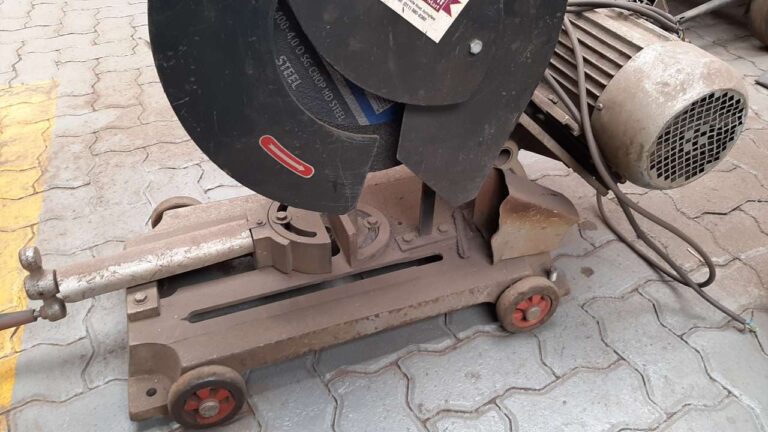
A cut-off machine is similar to a circular saw but has a larger blade that is used to cut metal. The machine consists of a motor with the blade, a guard, a spring hinge that connects the base to the blade, and the base where the metal is clamped to.
This is machine is great if you are looking to cut small longitudinal metal profiles like pipes or angle iron.
Band saw
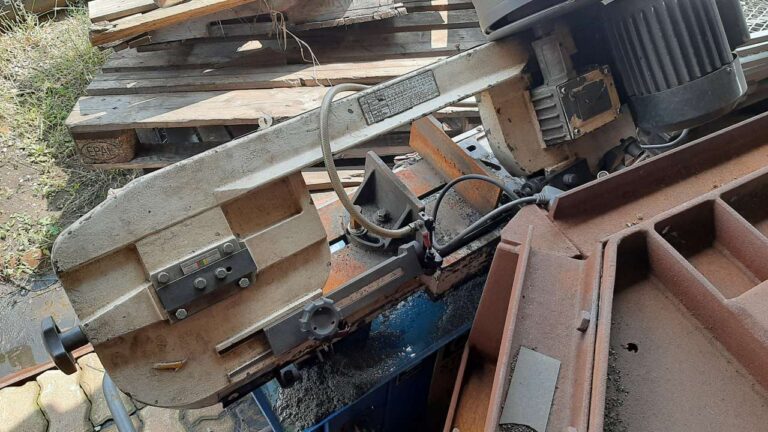
A lot like a cut-off machine, a band saw works in a similar way by lowering a rotating saw onto a longitudinal metal profile that is then cut.
I personally prefer a band saw to a cut-off machine because a band saw doesn’t create as much burr, creates a smaller cut, and is more accurate.
The downsides of a band saw are that it’s more expensive than a cut-off machine, takes longer to cut, and needs a constant flow cutting fluid.
Metal sheers
Metal sheers work similarly to scissors with two blades passing one another. You will notice there is a slight gas between the blades they don’t touch each other like scissors. This is to help cut through metal.
Metal sheers are only limited to around 1.6mm sheet metal and can be exhausting to cut that size of sheets. I recommend sticking to very thing metals that are similar to a can.
They are also great for cutting roses.
Hack saw/ mini hack saw
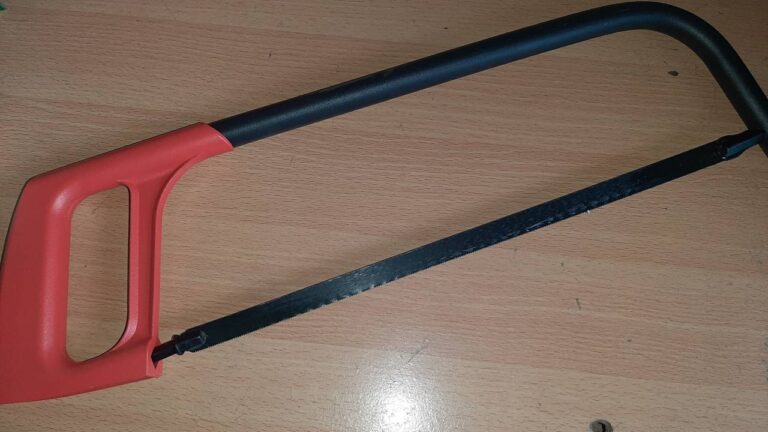
Hack saw should only be used for rough work, to quickly cut off an extrusion of thin metal, or bars of a prison cell. All jokes aside, whenever you use a hack saw make sure that whatever you are cutting is extremely secured with a vice or a g-clamp.
A mini hack saw is the best way to cut bolts up to m10 or m12 size. The blade fits easily between the threads creating a clean-cut, allowing a nut to fit on without much of a hassle.
Best way to cut a thin piece of metal at home
A hack saw is the best way to cut off a thin or small piece of metal at home because it is a lot cheaper than other tools, is easier to use, doesn’t create any sort of flammable sparks, and no need for a lot of PPE.
The ease of use and the low cost will make it the best option if you want a single piece once and not multiple items.
The best use cases of a hack saw will be.
- Cutting copper or thin/small pipes
- Cutting thin tubing (up to 3mm or 1/8 inch)
- Cutting PVC pipes
How to cut thin metal with a hack saw
- Clearly mark all around where you want to cut with a marker that you can clearly see on the metal.
- Slowly start to cut with the hack saw.
- Be sure to keep your blade straight
- If possible use a file or sanding paper to file down the burr made by the cut
The most efficient way to cut metal
If you are looking to cut metal then the best way to do it at home or any place is with an angle grinder. You most likely will be cutting thin pieces of metal so an angle grinder will be more than enough.
Just remember to avoid anything that can get caught on fire or be damaged by the sparks that are produced. Check out my post on how to safely use an angle grinder to learn more.
Don’t try so-called “hacks” to cut metal without an angle grinder. Spend the extra money and get yourself one they are worth it in the long run especially if you are planning to cut a lot of metal in the future.
If you are looking to cut large pieces of thick metal. Let’s say 8mm and up, then a cutting torch will be your best option.
I did a full post on an angle grinder vs a cutting torch that you can check out.
Conclusion
Working with metal is an art and cutting is like the mixing of colors. If you don’t get it right the first, your end product won’t come out correct. That is why before you cut anything check your size, shape, or radius twice then a third time. Doing this will help prevent a lot of headaches and frustrations. Trust me I have personally done and seen what cutting the wrong sizes can do.
If you have found this post interesting you can check out my post on what tools you need for metalwork. It covers the basic tools you will need to use when working with metal and some tips on how to use them properly.

